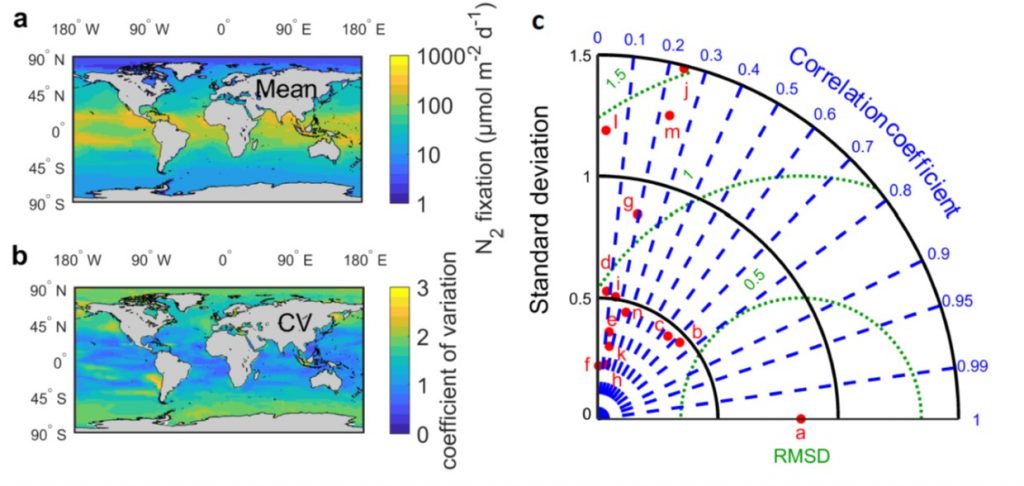Machine-learning (random forest) estimate of depth-integrated N2 fixation and nifH gene distribution (Tang et al. 2019, Tang & Cassar 2019)
Marine nitrogen (N2) fixation supplies “new” nitrogen to the global ocean, supporting uptake and sequestration of carbon. Despite its central role, marine N2 fixation and its controlling factors remain elusive. In this study, we compile over 1,100 published observations to identify the dominant predictors of marine N2 fixation and derive global estimates based on the machine learning algorithms of random forest (RF) and support vector regression (SVR). We find that no single environmental property predicts N2 fixation at global scales. Our RF and SVR algorithms, trained with sampling coordinates and month, solar radiation, wind speed, sea surface temperature, sea surface salinity, surface nitrate, surface phosphate, surface excess phosphorus, minimum oxygen in upper 500 m, photosynthetically available radiation (PAR), mixed layer depth, averaged PAR in the mixed layer, and chlorophyll-a concentration, estimate global marine N2 fixation ranging from 68 to 90 Tg N yr-1. Comparison of our machine learning estimates and 11 other model outputs currently available in literature shows substantial discrepancies in the global magnitude and spatial distribution of marine N2 fixation, especially in the tropics and in high latitudes. The large uncertainties in marine N2 fixation highlighted in our study argue for increased and more coordinated efforts using geochemical tracers, modeling, and observations over broad ocean regions.
See Tang et al. (2019) and Tang & Cassar (2019) for more information.



You must be logged in to post a comment.